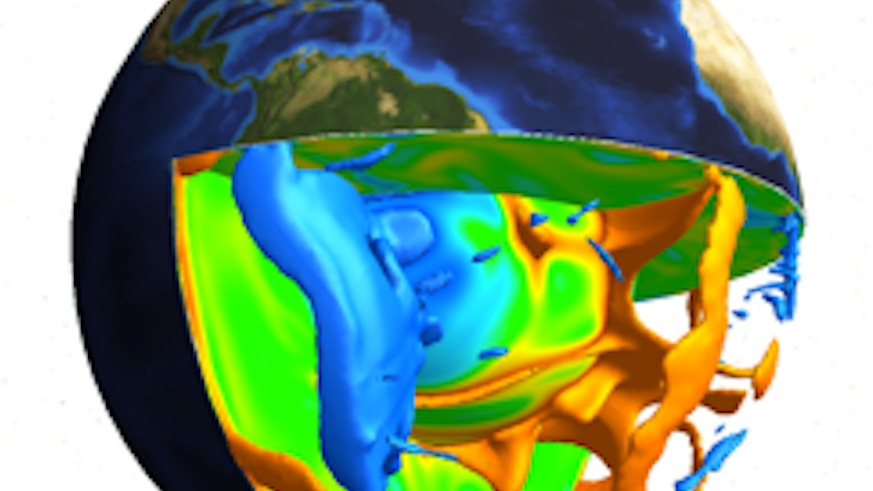New insights into Earth mantle discovered
17 May 2017

Research has revealed new insights into the convection patterns of the Earth’s mantle and its chemical makeup.
The findings, published in Scientific Reports, from the Nature Group, suggest that the mantle does not flow unhindered across the planet surface, as had been previously thought. Instead, it is divided into two very large domains that convect only within themselves, with little evidence of them mixing together.
The research paper suggests that one of these domains is found under the Pacific Ocean while the other exists outside of it and that upper mantle material flows to lower parts of the mantle when it reaches a subduction zone, where one tectonic plate descends beneath another one. This descending slab of material acts as a sort of curtain, preventing upper mantle material mixing all the way around the globe and keeping the two domains separate.
The research was funded by the Natural Environment Research Council (NERC) and conducted by Professor Huw Davies of Cardiff University’s School of Earth and Environmental Sciences, Dr Tiffany Barry from the University of Leicester’s Department of Geology, and Dr Martin Wolstencroft of JBA Risk Management, Skipton (formerly of Cardiff University), Dr. Matthew Price (Cardiff University) and Dr Ian Millar at the NERC Isotope Geosciences Laboratory.
The research team investigated the effect that plate tectonics have on the internal workings of planet Earth. They found that when mantle material reaches the bottom of the mantle, at the outer core, it does not spread out and go anywhere around the core, but instead returns to the same hemisphere of the globe from where it came. After modelling these motions they found that it can persist for 100’s millions of years.
A combination of spherical numerical computer models (3D finite element modelling) with the best available reconstructions of how Earth’s plates have moved over the past 200 million years were used to track mathematical particles placed at different depths of the modelled mantle. With these models they examined where the mantle freely moved to historically. Having tracked where particles flow in the models, the team then examined chemical isotope evidence from past ocean basins, which are a good analogy for the composition of the upper mantle in the past. With this data they were able to test whether former ocean basins, that are no longer present, had the same or different composition to subsequent basins that formed geographically in the same region of the globe.
The full paper “Whole-mantle convection with tectonic plates preserves long-term global patterns of upper mantle geochemistry” is available on the Nature website.